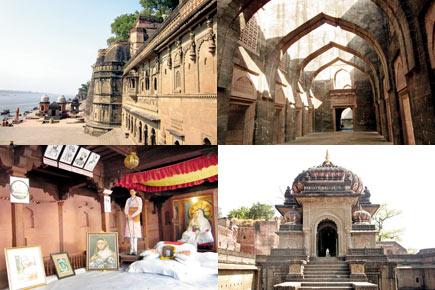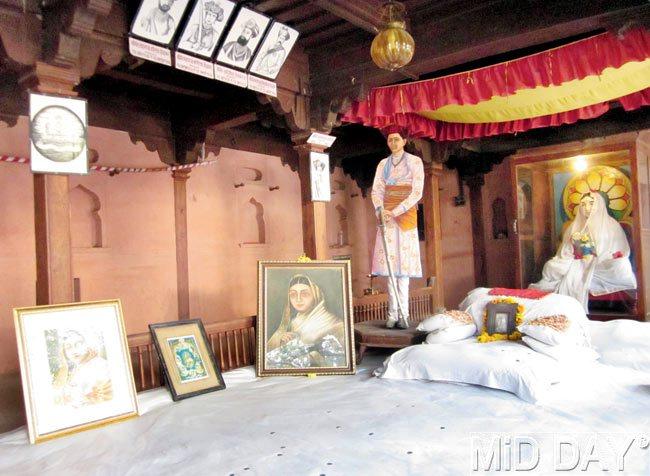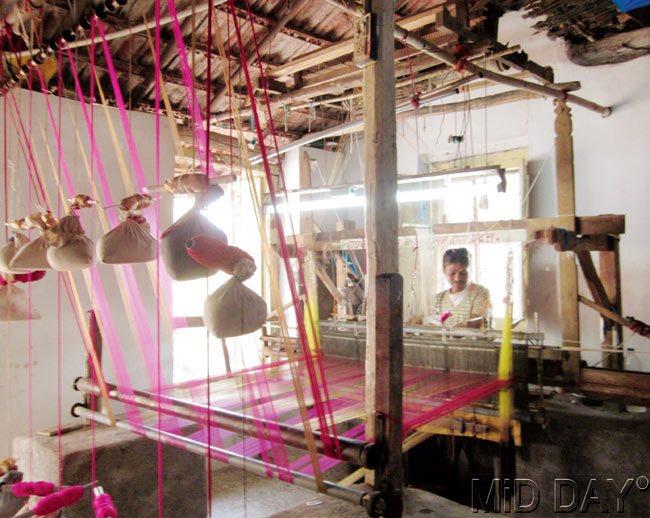The holy town of Maheshwar and the abandoned city of Mandu, once home to the Mughals in Madhya Pradesh, beckon Aruna Rathod, who falls in love with the romance and royalty of an era bygone

Travel, Mandu, Maheshwar, abandoned city, Madhya Pradesh, Mughals, Ahilyabai Holkaru00c3u00a2u00c2u0080u00c2u0099s museum, Maheshwar Palace
Maheshwar and Mandu, Madhya Pradesh
Best time to visit: Nov-February
You need: 2-3 days
After hearing about Mandu’s romantic charm from a friend, it didn’t take me long to make up my mind about visiting the city, which is at the heart of the country, Madhya Pradesh. Since Maheshwar is close to Mandu, and Maheshwari sarees a big draw for me, it was with a lot of excitement that I set out to explore these two beautiful cities.
ADVERTISEMENT

The Maheshwar Palace as seen from the banks of the River Narmada
It is an overnight train journey to Indore. I am not aware that the Avantika Express does not have a pantry car, and I remain hungry till almost 10 pm. The train leaves Mumbai Central at 7 pm and you can place your dinner order with an attendant, who, in turn, informs a caterer at a station further ahead. When the train reaches the next station at 10 pm (that is, if it comes on time), the caterer loads plates of food onto the train, which is then served to you. I am impressed with the co-ordination. And the food isn’t that bad. By early morning, I’m at Indore.

Ahilyabai Holkar’s museum at Maheshwar. Pics/Aruna Rathod
From Indore, I hire a taxi to reach Maheshwar, which is approximately 91 km away. Being a fort-palace on a hill, a majestic gate marks the entrance to Maheshwar. I walk up and am amazed at the laidback charm of the place. On the right-hand side of the entrance is Laboo’s café. Set under the open sky and sharing the fort walls, the café is painted in white and has colonial furniture. While having coffee, the waiter asks whether I would like to place an order for lunch. I zero in on the thali — homemade dal, subzi, roti, rice, raita and papad, which I devour after my jaunt through the city.
Labour of love
I start my walk around the quaint town. The cool weather makes walking a pleasure. Maheshwar, occupied by families of weavers, is a self-sufficient town. I explore the Maharani Ahilya Bai Museum, which is small, but interesting. The quaint little museum is housed in Rajwada, in a one-storeyed structure. I catch sight of various heirlooms and relics from her time, including a palanquin.

The weavers in Maheshwar
Reading the placards, I learn that Ahilya Bai was the ruler of Holkar dynasty and Maheshwar goes back 4,000 years ago. Emperor Akbar had built the fort after he came into power in the year 1601. In the late 18th century, Maharani Ahilya Bai took over as the queen of Holkar Dynasty, transforming this riverside town into a peaceful place.

A temple in Maheshwar
After the museum, I walk under the shade of huge trees to reach the numerous Shiva temples. In between the towering steeples, the blue Narmada flows, creating a picture-perfect landscape. Walking through the palaces and temples, as I admire the intricately carved structures, stone steps take me to the banks of the Narmada. The place has a pristine beauty, and on the boatmen’s insistence, I take a boat cruise. From the boat, the view of the massive, sand-coloured temple buildings and the palace is truly captivating. After a 45-minute cruise, I walk back through the weavers’ centres, known for its Maheshwari fabric. The history of Maheshwari sarees goes back to about 250 years ago, when Rani Ahilyabai introduced these uniquely woven sarees.
The weavers unfurl numerous fabrics and sarees. I am spoilt for choice! Happy with the array in front of me, I pick up a few dupattas and sarees. Then I walk back to the café, to devour my sumptuous thali. Then the taxi drives me to Mandu — the city of love.
The magic of Mandu
Under the setting sun, Mandu is magical, with silhouettes of old Mughal structures that have a lot of stories to tell. A series of gates on the outskirts, now in ruins, with royal names such as the Alamgir and Bhangi Darwarza, Rampol Darwaza, Jehangir gate and Tarapur Gate welcome me to the city. Mandu boasts of 61 monuments that are spread over almost 10 km, so it’s best to hire a car. I spend the night at the Madhya Pradesh Tourist Hotel, which overlooks the Sagar Lake.
I want to cover as many monuments as possible, so I start early the next day. The first stop is the Hindola Mahal — identified by its unique sloping walls. The side walls had been strengthened with massive sloping buttresses, from which it gets its name — Hindola (swinging). The building has an ornamental façade with delicate trellis work. Around the Hindola Mahal are the baths, called Champa Baoli, where hot and cold water were provided for bathing. I make myself comfortable an open-air canteen in the company of squirrels, sip nimbu pani and soak in the breathtaking view of the buildings.
In Mandu, all the structures are situated a couple of kilometres apart, separated by green pastures. My next stop is the Rewa Kund, situated on a hill, which houses Baz Bahadur’s Palace. It is marked by an old stone-lined reservoir at the entrance of the Baz Bahadur’s Palace, which is still used by the villagers for washing clothes and bathing. During the days of Baz Bahadur, water from the tank used to be pumped to the palace.
Baz-Bahadur’s Palace is not a sprawling one and has wide steps with landings at intervals. Along the passage, which has a vaulted ceiling, I pass the rooms for guards on both sides. The passage leads to the main doorway of the outer palace court. The main portion of the palace consists of a spacious open courtyard with halls and rooms on all the four sides and a cistern in its centre. Don’t be surprised if a local comes in and starts singing traditional folk songs for a couple of rupees!
What I find most romantic, is Rani Roopmati’s pavilion, situated higher than Baz Bahadur’s palace. The pavilion rests on a ridge high above the Rewa Kund and the plateau plunges 300 metres, into the Narmada Valley. There are pavilions on the terrace of the original portion, square at the base and crowned with domes. It is a sheer pleasure to sit under the dome with the wind in your hair. History has it that the queen would sit on the pavilion and stare at the Narmada for hours.
The last stop in Mandu is the Jama Masjid and the tomb of Hoshang Shah, one of the rulers of Mandu. The Jama Masjid is a huge pinkish domed structure that is visible from a distance. This building is believed to be modelled on the Great Mosque at Damascus. Beyond the latticed screens and bands of blue-glaze tiles — most of which have gone missing — that decorate the main doorway, a flight of steps leads up from the square to the large domed entrance porch.
The tomb is made entirely of milky white marble — the first of its kind in the subcontinent. An inscription on the right door records the visit of the Mughal emperor Shah Jahan in 1659. He had brought four architects to study the building before they began work on the Taj Mahal. As I head back to Indore, I am lost in thoughts of Mandu’s rich heritage, along with the royalty and romance of an era bygone.
 Subscribe today by clicking the link and stay updated with the latest news!" Click here!
Subscribe today by clicking the link and stay updated with the latest news!" Click here!







